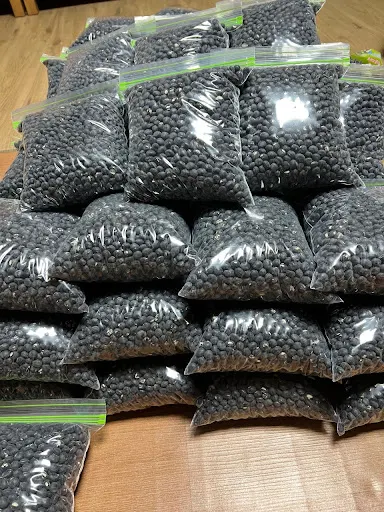When I was staying in Seoul, I heard from my mom that my grandfather was busy with farming.
Since I had plenty of free time back then, I decided to head to the countryside right away.
Even though it was early in the morning, there were already many people around.
Most of them seemed to be on their way to work since it was a weekday.
내가 서울에서 지내고 있을때 할아버지 농사일이 바쁘다고 엄마한테 전해들었다.
나는 그떄 시간이 많아서 바로 시골로 출발했다.
새벽인데도 불구하고 사람들이 많았다.
평일이라 대부분 사람들이 출근하는 사람들이였다.
On the first day, I just took it easy and rested at his house.
While resting, I borrowed my grandfather’s motorcycle and rode around the area.
As I was riding, a field of reeds caught my eye.
기차안에서 잠들고 일어나니 어느새 할아버지 집인 익산역에 도착을 하였다.
나는 할아버집에 도착하고 첫날을 쉬었다.
나는 쉬는동안 할아버지의 오토바이를 빌려 주위를 둘러보았다.
달리는 도중 갈대밭이 내 눈을 사로잡았다.
Whenever I come to the countryside, I feel a deep sense of peace.
It always feels like coming home, and memories of my childhood come flooding back.
언제나 시골집에 오면은 마음이 평온해진다.
꼭 고향에 온 기분이들고 어릴적 생각이난다.
That jar over there is called a "jangdok" — a traditional Korean clay jar.
It’s mainly used to store and ferment food, and people take out what they need when the time comes.
At my grandmother’s house, the jars are filled with different kinds of fermented sauces like doenjang (soybean paste) and ganjang (soy sauce).
In Korea, "jangdokdae" (the outdoor platform for the jars) is used not only for sauces but also for fermenting kimchi.
저기 항아리는 "장독" 이라는 것이다.
주로 발효 시키는 음식을 저 안에 넣고 필요할 떄 마다 꺼내 먹는다.
우리 할머니집 같은 경우 된장,간장 등 장의 종류가 들어있다.
한국에서 장독대는 장 종류뿐아니라 김치도 또한 넣고 발효를 시킨다.
This photo was taken at a different time.
In Korea, people make a large batch of kimchi during the winter to eat throughout the following year.
This process is called "gimjang" — a traditional practice where families or neighbors gather to prepare and share kimchi together.
The napa cabbages in the garden above are being grown for gimjang.
이 사진은 다른 시기에 찍은것이다.
한국에는 겨울에 다음 한해를 먹을 김치를 한번에 만들어서 가족들이나 같이 만든 사람들에 나누어 준다.
이러한 과정을 "김장"이라고 부른다.
저 위에 텃밭에있는 것은 김장을 위한 배추들이다.
In Korea, people make a large batch of kimchi during the winter to eat throughout the following year.
This process is called "gimjang" — a traditional practice where families or neighbors gather to prepare and share kimchi together.
The napa cabbages in the garden above are being grown for gimjang.
이 사진은 다른 시기에 찍은것이다.
한국에는 겨울에 다음 한해를 먹을 김치를 한번에 만들어서 가족들이나 같이 만든 사람들에 나누어 준다.
이러한 과정을 "김장"이라고 부른다.
저 위에 텃밭에있는 것은 김장을 위한 배추들이다.
There are no tall buildings or bright city lights here,
so the countryside sunset and night sky are truly beautiful.
여기는 높은 건물과 화려한 조명이없어 시골 노을 과 밤하늘이 진짜 이쁘다.
so the countryside sunset and night sky are truly beautiful.
여기는 높은 건물과 화려한 조명이없어 시골 노을 과 밤하늘이 진짜 이쁘다.
There were far more stars than what the camera could capture.
I stood there for a while, looking up at the sky in awe, completely lost in the moment.
나는 한동안 고개를 들어 넋을 놓고 쳐다보았다.
The next day, I woke up early and set out with my grandfather to help with the black soybeans, known as seoritae in Korean.
We were fully prepared, but as expected, farming was anything but easy.
만반의 준비를 하고 떠낫지만 역시나 농사일을 쉽지않았다.
We cut the stems with a sickle, loaded them onto the cultivator, and spread them out in the yard to dry once more.
Today, my role was to help cut the stems, load them onto the cultivator, and unload them again in the yard.
줄기를 낫으로 잘라 경운기에 실어 옮겨 마당에 뿌려 다시 한번 말린다.
오늘 나는 낫으로잘라 경운기에 실고 마당에 내릴때 도와주는 역활이였다.

There were many thorny bushes, so it wasn't easy, but by working hard, I finished today's tasks before I knew it.
가시나무가 많아 쉽지않았지만 그래도 열심하다보니 어느새 오늘 할일은 끝냈다.
At night, I sorted the harvested beans into ziplock bags.
This was the easiest task I did today.
밤에는 수확한 콩을 지퍼백에 소분하는 작업을 진행하였다.
오늘 한 일중에는 제일 쉬웠다.
Today's work is done!~~
오늘 작업 끝~~
The next day, I went to Saemangeum, a huge reclaimed land area near my grandfather’s house, where I enjoyed delicious food and admired the beautiful sea.
다음날은 할아버지 집 근처에있는 엄청 큰 간척지인 새만금에 가서 맛있는것도 먹고 멋있는 바다를 보았다.
This is how I ended my journey in Iksan.
이렇게 익산에서 나의 여정을 마쳤다.
Tags:
Countryside(시골)





















